One of the things you should absolutely do when visiting Japan is to try on their traditional full-length garment called kimono. (Kimono Rental Tokyo)
A kimono is a beautiful and elegant full-length robe that’s used to be worn by the Japanese on a daily basis; but nowadays, it is mostly only being worn by the locals during graduation programs, tea ceremonies, festivals, and other formal events. Nevertheless, Japan’s geisha and sumo wrestlers still wear it almost every day.
.
Now, the term ‘kimono’ literally translates to “garment” with ki (着) which means “to wear” and mono (物) which means “thing” or “object”.
.
There are different types of kimono such as furisode (worn by unmarried women), yukata (light wear for summer use), tomesode (formal wear for married women), and many others. But as a standard, kimono are straight T-shape robes that fall to the ankles along with attached collars and long, wide sleeves.
.
They are customarily wrapped around the body, always with the left side over the right (except when dressing the dead for burial), and are secured by a sash called an obi, which is tied at the back. To finish it off, it is worn with traditional footwear (zōri or geta) and split-toe socks (tabi).
That being said, it can be quite a rare sight to witness a crowd of Japanese people wearing kimono on the streets unless there’s an event. In fact, if you see someone dressed up in a kimono in public, that person would most likely be an expat or a tourist!
With that in mind, as a non-Japanese person, it IS possible for you to put on a kimono, walk around with it for a day, and take lots and LOTS of photos — and you can do this simply by going to kimono rental shops that are spread out all over Japan.
The quintessential place to rent and wear a kimono would be in the ancient city of Kyoto; but if you’re short on time and can only explore the capital of Tokyo, don’t fret! Because much like what I did, you can simply head over to the district of Asakusa and make full use of its picturesque shrine and temple as well as its olden Edo era buildings and surroundings that serve as perfect backdrops for your pictures.
What to Do in Tokyo?
Check out this detailed Tokyo itinerary guide!
After all, I rented a kimono for a day while I was in Asakusa, Tokyo during my first trip to Japan and it was an experience that I will never forget and that I absolutely recommend for you to try alone, with friends, with family, or with your partner!
How to Do a Kimono Rental
» Where to Rent a Kimono
Finding a good kimono rental Tokyo shop can be tricky if you don’t speak Japanese because many of the owners in Asakusa — or just the Japanese people in general — don’t speak English fluently. Or at all. Rest assured, there are shops (like those I will list below) that do have employees who can speak decent English.
But what place do I highly recommend? A rental shop called YAE. I picked them because when I was browsing for rental providers online, I noticed that YAE was providing more luxurious and sophisticated-looking kimono ensembles and designs compared to the other rental shops in the area (it was complete with ribbon obi, decorative strings, etc.). To illustrate:
What’s more is that a matching tote bag, zori (traditional Japanese slippers), tabi (socks), a complete hairstyling session, and several hair accessories were already included in their base price. Also, its close proximity to the Sensoji Temple was a big plus for me!
✮ YAE
Website to book: Klook
Hours: 9:30AM to 5:30PM daily
Telephone: 03-6886-4256
Google Maps: Near the train station [link] or you can also see this illustrated map of directions
If, however, you want to check out the other kimono rental Tokyo shops in the area who offer other options on kimono (but often with simpler/modern design), click the (+) symbol below to expand the following section:
(CLICK TO OPEN) Other Kimono Rental Tokyo Shops in Asakusa
✮ Aiwafuku
2-3F NW Building, 1-11-4 Hanakawado, Taito-Ku, Tokyo
Hours: 09:30 to 18:00
Telephone: 03 6231 7554
Email: None (reservations are made via their online booking form)
Website: [link]
Kimono Miyabi 〒111-0032 Tokyo, Taito City, Asakusa, 3 Chome−30−2
Hours: 09:00 to 18:00
Telephone: +81 3-6802-3566
Email: None (reservations are made via their online booking form)
Website: [link]
VASARA
2-29-21 Asakusa, Taito-ku, Tokyo
Hours: 9:00 to 18:00
Telephone: +81 3-5577-5882
Email: None (reservations are made via their online booking form)
Website: [link]
– – –
» Sample Kimono Designs
Above are some of the sample Now… please don’t think that you can just buy your own kimono and proceed to put it on by yourself!
First things first, a full kimono set customarily costs a fortune (a lot of Japanese people actually end up renting too since it’s a lot cheaper; plus, they rarely use it as well).
Secondly, a kimono is an extremely intricate piece of clothing to put on given that it involves a LOT of layers and knots; so, you can’t just wear it whimsically without any prior experience and knowledge. Besides, someone typically helps put on a kimono for another person anyway, and these professionals usually take classes to learn how.
Truth be told, one of the reasons why the Japanese rarely wear kimono nowadays is because they can’t put it on by themselves.
With all these factors considered, it’s truly best that you head on over to a professional Japanese kimono rental shop in order to get a hassle-free experience that will save you time, effort, and money — and with the help of this guidepost, it’s my hope that the overall process will be smooth for you!
– – –
» Cost and Duration of Kimono Rental Tokyo
When it comes to YAE, the cost of their regular kimono rental is as follows…
– ¥3,000 ($28) for kids 3-6 years old
– ¥4,880 ($45) for kids 7-10 years old
– ¥5,980~ yen ($55~) for females
– ¥5,680~ yen ($53~) for males
– ¥5,280~ yen ($50~) each if you come as a group of 3
– ¥11,780~ yen ($110~) total discount for 2 females
– ¥11,460~ yen ($107~) total discount for a couple set
– ¥15,660~ yen ($145~) total for a family set of 2 adults and 1 child 3-10 years old
– ¥23,000~ yen ($215~) for the luxurious furisode attire
If you book with Klook, you get a discounted rate. And as such, you will get the following in return…
- Complete kimono ensemble for men and women [small to large sizes] and children [sizes under 140cm in height].)
- Staff help to assist you in putting up your kimono (they can speak English).
- FREE clothing accessories, tote bag, complicated hairstyling (of your choosing), and elaborate hair ornaments.
- In winter, a coat or haori and fur shawl are provided for FREE (other stores charge for this — the photo on the right shows a fur shawl on top of the kimono).
The duration: With the above regular kimono rental Tokyo rates, the shop will allow you to walk around Asakusa in your kimono for a day. You only need to return on 5:30PM to change and give the kimono back (if you go beyond that time, you will be charged). Otherwise, do you want to rent a kimono overnight instead? Returning it on the next day costs ¥6,340~ ($59~), just inquire with the store once there.
– – –
» How to Book a Reservation
It’s simple and easy! Just go to Klook to book your kimono rental Tokyo request.
To date, they have several time slots available (since dressing up in a kimono takes time), and they are:
- 9:30AM
- 10:00AM
- 10:30AM
- 11:00AM
- 11:30AM
- 12:00PM
- 12:30PM
- 1:00PM
- 1:30PM
- 2:00PM
- 2:30PM
- 3:00PM
On the checkout page, please note the gender or ages of participants if in case you are booking a couple or group package. Once everything is paid and booked, you will receive your e-voucher. You just need to print this and show it to YAE on your scheduled date.
It’s possible to walk in to YAE with a reservation — BUT, that is quite risky given the number of daily customers that they have. You might either wait a long time or not be accommodated at all. So it’s always best to book online beforehand!
– – –
» My Kimono Rental Tokyo Experience & Tips
The staff at YAE were friendly, efficient, and patient — so the overall process from rental “check-in” to “check-out” was seamless. Here are some tips to take note of…
- Arrival: Come as early as 9:30AM so that you have ‘first dibs’ on the array of kimono design choices — this is to also maximize your rental time. Take note that it starts to get crowded by 10:00AM.
- You don’t need to bring anything when you arrive because everything you need is included in the rental plan: kimono, obi, undergarment, a bag to carry when wearing kimono, zori (sandals), tabi (socks), etc. But for your clothing, if you come in the summer, it’s best that you wear a thin undergarment or a tank top because of the heat. Do NOT wear collared clothing as it will get in the way of the kimono. Whereas in winter, it’s preferable that you wear thin thermal clothing such as heat-tech shirts leggings to keep you warm.
- As for your belongings, YAE can store them for you and they will give you a number tag in exchange. However, it’s best that you keep your valuables with you — but no worries, they will be providing you with a small matching tote bag for your kimono so you can store it in that.
.
- Choosing a kimono: The staff will usually give you recommendations but you’re absolutely free to pick the design that you want. For the ‘classic’ look, picking a red kimono is a great choice — or if it’s during cherry blossom season, pick the designs that have sakura in them or anything that’s light-colored. Anyhow, it’s up to you!
- Take note that putting on a kimono rental is a meticulous process (takes about 30 minutes) and you will find that it requires a LOT of layers and knots — so yes, it can get tight; therefore, always let your dresser know if it’s getting hard to breath. Putting on all these layers and knots is an art in itself because it’s important to not only keep the kimono’s shape but to also ensure that all the robes won’t fall apart nor open once you start walking around.
- It helps to know that this is how a kimono really is — it won’t show your curves and you might look stuffy. Unlike other dresses, this is a typical feature for wearing a kimono because apparently, the traditional view of beauty in women depicts a straight figure with clothing that is elaborate and which constricts their footsteps. Additionally, it is believed that this style originally gave men the chance to wonder what’s ‘underneath’.
- Footwear (zori) is provided with your kimono rental along with special Japanese socks called tabi.
- You can opt to bring along a traditional Japanese umbrella that’s great for photos for an additional fee of ¥500 yen.
- You’re also free to choose from any of YAE’s tote bags to match your kimono rental and then put inside your valuables (e.g. camera, money, etc.)
.
- Take note that putting on a kimono rental is a meticulous process (takes about 30 minutes) and you will find that it requires a LOT of layers and knots — so yes, it can get tight; therefore, always let your dresser know if it’s getting hard to breath. Putting on all these layers and knots is an art in itself because it’s important to not only keep the kimono’s shape but to also ensure that all the robes won’t fall apart nor open once you start walking around.
- Hair & makeup: You will need to do your own makeup, but you don’t need to worry about your hair because styling it is included in your kimono rental fee. They actually have a separate floor for changing into your kimono attire, and this same floor has the hairstyling section. You’re free to show them a photo of the hairstyle that you want; otherwise, they have a photo pamphlet of different hairstyles that you can choose from. They also have various ornamental hair accessories that you can pick from.
. - Kimono rental return: Make full use of the time allotted to you (if you return earlier than your end time, don’t expect an appropriate refund). Additionally, always remember to take good care of your kimono rental. Rest assured, there is no cleaning charge for soil due to spilled food, a splash of mud, abrasion, etc. So you need not worry about soiling the kimono rental when you are wearing it on a rainy day for example. However, in the case of irreparable stains such as oil-based paint, etc., or damage (cigarette burns, etc.), YAE may require compensation in the amount of 5,000 yen (exclusive of tax).
» READ: For ideas on what to do around Asakusa, read here. Of course, the places that are not to be missed are Sensoji Temple and Nakamise-dori Street, among many others!
Also, one of the amazing perks that you get when you do a kimono rental Tokyo for a day is that you turn into some sort of mini-celebrity. The moment that I stepped out of the shop and walked a few meters away, some other tourists started to take pictures of me AND with me!
Several Japanese people also started smiling and throwing compliments my way — well… I don’t know exactly what they said but I did pick up the words kirei (beautiful), utsukushoii (pretty), kawaii (cute), and sugoi (amazing) from their speech. Additionally, some old grandpas and grandmas even gave me a thumbs up!
NOTE: If you’re a white or black gaijin (foreigner), the attention and picture-taking spree will surely double!
.
WALKING TIP: Don’t take wide strides; revel in small in-toe steps. When you sit down and stand up, put your hands and feet together with your back straight — actually, it’s not hard to keep your back straight because the stiff obi helps keep it that way. As for when you’re taking photos, make your stance a bit diagonal in order to slightly show your obi’s back bow as well as your hair accessories. It also helps to put one foot on top of the other as you lean a bit backward).
– – –
» FAQ About Kimono Rental Tokyo
In summer which is during the months of June, July, and August, kimono rental Tokyo shops like YAE usually rent out yukata which is basically like a kimono but a lot lighter and thinner in material.
Another traditional Japanese clothing you can try on is a ‘hakama’. This is often worn by shrine maidens or by students during their graduation ceremony (price would be around ¥10,000 yen or $95~). If you want a more ‘luxurious’ kimono clothing, try the ‘furisode‘ (¥23,000 yen or $215~) that is distinguishable by its longer sleeves, worn by young unmarried women in Japan. If you’re married, there is the ‘homongi‘ (¥19,000 yen or $177~).
For a more special kind of ‘dress up’ experience, there are other rental shops like Studio Nanairo that can transform you into an oiran (traditional Japanese courtesan) or a geisha (traditional Japanese entertainer; but this service is mostly done in Kyoto).
Yes of course! It helps to note though that a male kimono is more simple and subdued, and if you’re really tall, there might be fewer choices on the kimono.
Not at all. The Japanese never refer to it as cultural appropriation because they deem it more as cultural ‘appreciation’. Besides, they like it a lot when other nationalities take an interest in their culture, customs, and clothing (which is much like South Korea’s attitude towards foreigners renting their traditional clothing called hanbok). This is the reason why makeover studios and kimono rental places are so popular in Japan! My experience also serves as proof because as I’ve mentioned above, a lot of Japanese people walked up to me to appreciate the fact that I was wearing a kimono. Some of them even gave me a thumbs up!
For women, YAE generally has kimono pieces that can fit a height of up to 180cm; whereas for men, up to 195cm. If you’re even taller, it’s still possible to accommodate you but there might be fewer designs to choose from or that it might be a bit short.
Take note that the maximum waistline they can do is at 120cm. Generally, they don’t recommend dressing up when you’re pregnant because the robe will be knotted on real tight, and it might not be comfortable for you.
Absolutely! YAE will just make sure that you wear a kimono that won’t drag along the ground.
There is no cleaning charge for soil due to spilled food, a splash of mud, abrasion, etc. So you need not worry about soiling the kimono when you are wearing on a rainy day. However, in the case of irreparable stains such as oil-based paint, etc. or damage (cigarette burns, etc.), YAE may require compensation in the amount of 5,000 yen (exclusive of tax).
Yes, you can leave your luggage in the rental shop and they will segregate it in bags as well as give you a tag for it. However, make sure you bring your valuables with you by putting them in the matching tote bag that they will be providing.
No, you do not need to bring anything since all of the items that you will need are already available and provided for in the rental shop. In summer YAE suggests wearing thin underwear such as a tank top because of the heat (do NOT wear collared or high-collared shirts), and in winter they recommend that you wear thin thermal clothing such as heat-tech shirts, which have excellent heat retention as well as leggings to keep you warm.
Apart from the fact that you can wear the kimono and stroll around Asakusa for a day, YAE also provides a photography service (starts at ¥11,000 yen) and rickshaw service (starts at ¥3,000 yen). You can also book a separate rickshaw tour in Asakusa.
Sure thing! But as a courtesy, make sure you don’t spend more than 20 minutes looking through their kimono designs.
The staff of the rental shop will usually suggest matching accessories for you; but of course, you’re absolutely free to choose what you want to put on your kimono and hair. If you want a certain hairstyle, it’s best that you prepare a photo of it so that you can show it as a reference to the staff people — otherwise, they provide photos/guides on usual hairstyles used on which you can choose from.
It normally takes about 40 to 50 minutes for women (including hairstyling) and 20 minutes for men.
YAE doesn’t usually provide it but some of the rental shops can do your make up. Just ask them about it, and I believe it will cost about ¥4,000 yen (Php 1,700~ / $35~). If you ask me though, I think it’s best that you just do your own make-up.
Yes, YAE has a ‘next-day return plan’ costing ¥6,340~ (or Php 3,090~ or $59~). In case the option is no longer available online, you can talk to them in-store.
Most of the rental shops sell their kimono, so it doesn’t hurt to ask.
• • •
Asakusa Travel Guide
» Best Time to Visit
Any time and any season! May it be spring, summer, autumn, or winter, Tokyo has a ton of destinations and experiences that can fill your travel needs.
- WINTER:
Dec to Feb
- SPRING:
March to May
- SUMMER:
June to Aug
- AUTUMN:
Sept to Nov
– – –
» Getting in to Japan
By air. Narita (IATA: NRT) is Japan’s major international airport and it is located nearly 70km northeast of Tokyo. In order to get the best flight deals to this country from just about anywhere on the globe, I highly suggest searching through Skyscanner:
– – –
» Visa for Japan
If you’re NOT a citizen of any of Japan’s exempted countries, you are then required to avail a visa beforehand. (If you’re from the Philippines, you can read my guide on how to get a Japan visa in Manila here.)
- Check full visa requirements here as per your nationality.
– – –
» Where to Stay (Asakusa Accommodations)
To search for the best hotel accommodation in Japan at the best prices, I suggest cross-checking hotel prices between Agoda and Booking.com. But if you’re rather interested in renting comfortable houses or apartments, you should search through AirBnB. For more specific recommendations of Asakusa hotels:
Luxury: The Gate Hotel Asakusa Kaminarimon / Mid-Range: Hotel MyStays Asakusa / Budget: K’s House Tokyo Oasis – Quality Hostel
RELATED READ: Best Hotels in Tokyo
– – –
» How to Get to Asakusa in Tokyo
The closest station to the kimono rental Tokyo shops is Asakusa Station and it is easily accessible via Ginza Line or Asakusa Line. If you need further help, just use the directions feature in Google Maps (signified by a blue icon with an arrow inside it) — I find this as a very helpful tool if I want to reach a certain place from a particular location.
However, Google Maps doesn’t work offline if you want routes or transportation schedules, so I recommend that you get a pocket WiFi or a SIM Card to stay connected online).
– – –
» Safety in Japan
Japan is one of the safest countries in the world with very low crime rates. I have been traveling solo to this country many times now and I have never felt unsafe even in the late hours of the night — however, this is NO excuse to get too complacent. ‘Little crime’ does not mean ‘no crime’, so stay vigilant and be “street smart” by using your common sense at all times.
Nevertheless, the Japanese people are one of the kindest and most respectful people I have ever met, so solo travelers don’t have much to worry in this amazing country.
– – –
» Helpful Japanese Phrases
Japan may be one of the most developed countries in the world, but a lot of the locals don’t speak English. However, this should not discourage you from traveling to this country because apart from the fact that there are a lot of translation apps that will help you understand and speak Japanese, a lot of the locals are also making the effort to learn and use the English language.
- RELATED READ: Best translation apps for travel
Anyhow, below are some helpful Japanese phrases that will help you along the way! And even if you do encounter a Japanese who can speak English, it doesn’t hurt to say a word or two in their language.
Hello: Konnichiwa (Kohn-nee-chee-wah)
Thank you (normal): Arigatō. (Ah-REE-gah-tohh)
Thank you (less formal): Arigatō gozaimas (Ah-REE-gah-tohh goh-zahy-mahs)
Thank you (informal): Dōmo (DOHH-moh)
Yes: Hai (Hai)
No: Iie (E-eh)
Goodbye (long term): Sayōnara (Sah-yohh-nah-rah)
Goodbye (informal): Ja ne (Jahh neh)
Excuse me: Sumimasen (Soo-mee-mah-SEN)
I’m sorry: Gomen nasai (Goh-men-nah-sahy)
Is there someone here who speaks English?: Dareka eigo ga hanasemasu ka? (Dah-reh-kah ey-goh gah hah-nah-seh-mahs kah?)
Help!: Tasukete! (Tahs-keh-teh!)
Cheers!: Kanpai! (Kan-pie!)
• • •
» Top Tokyo Tours «
Mount Fuji Classic Tour
— with 4 other stops.
Robot Restaurant Show
One of Tokyo’s top attractions for years!
• • •
Overall
If you’re looking for a unique activity that will totally immerse you in the Japan travel experience, a kimono rental Tokyo is something that you should NOT miss!
After all, it makes for a wonderful memory and a great opportunity to take amazing pictures in the ‘Land of the Rising Sun’. Enjoy!

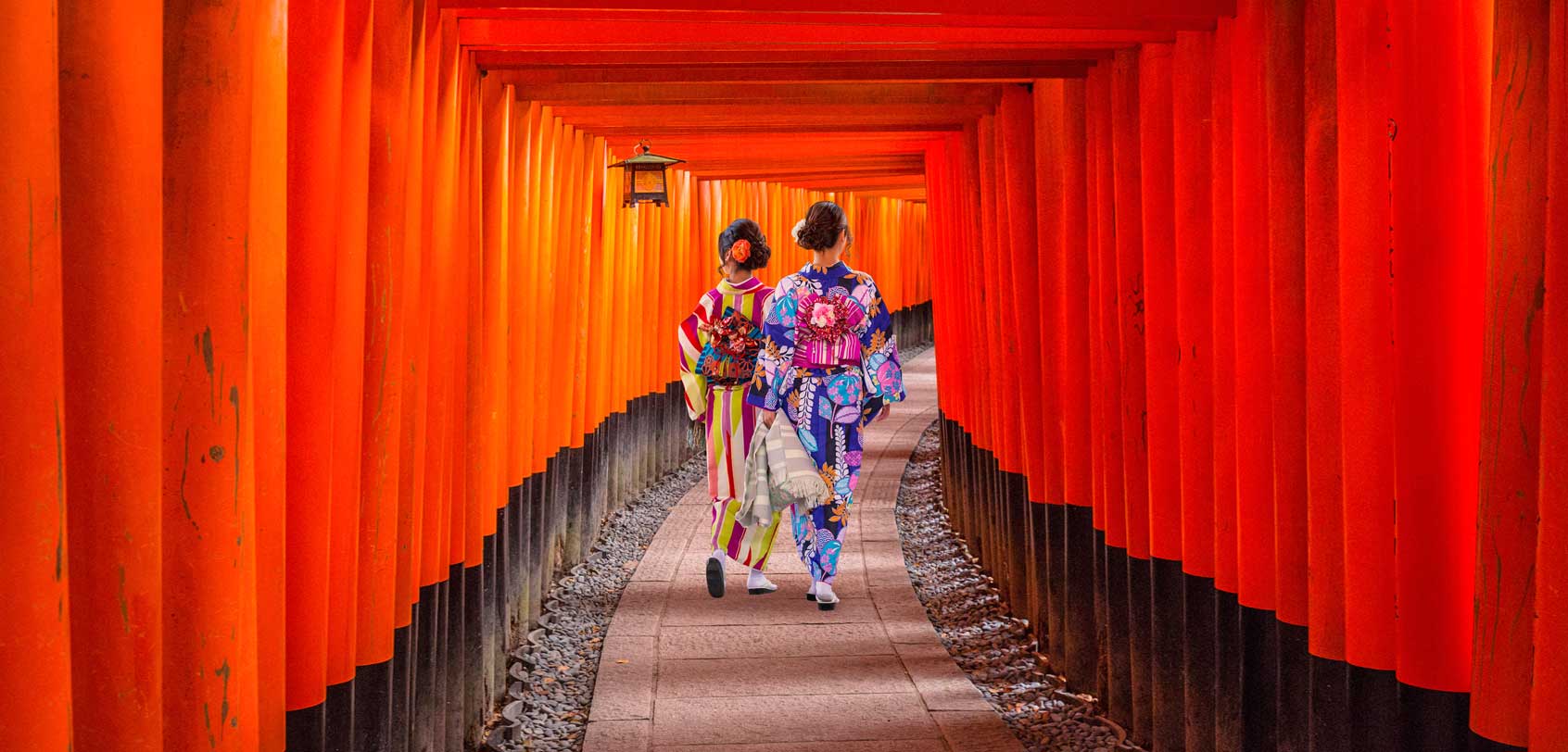

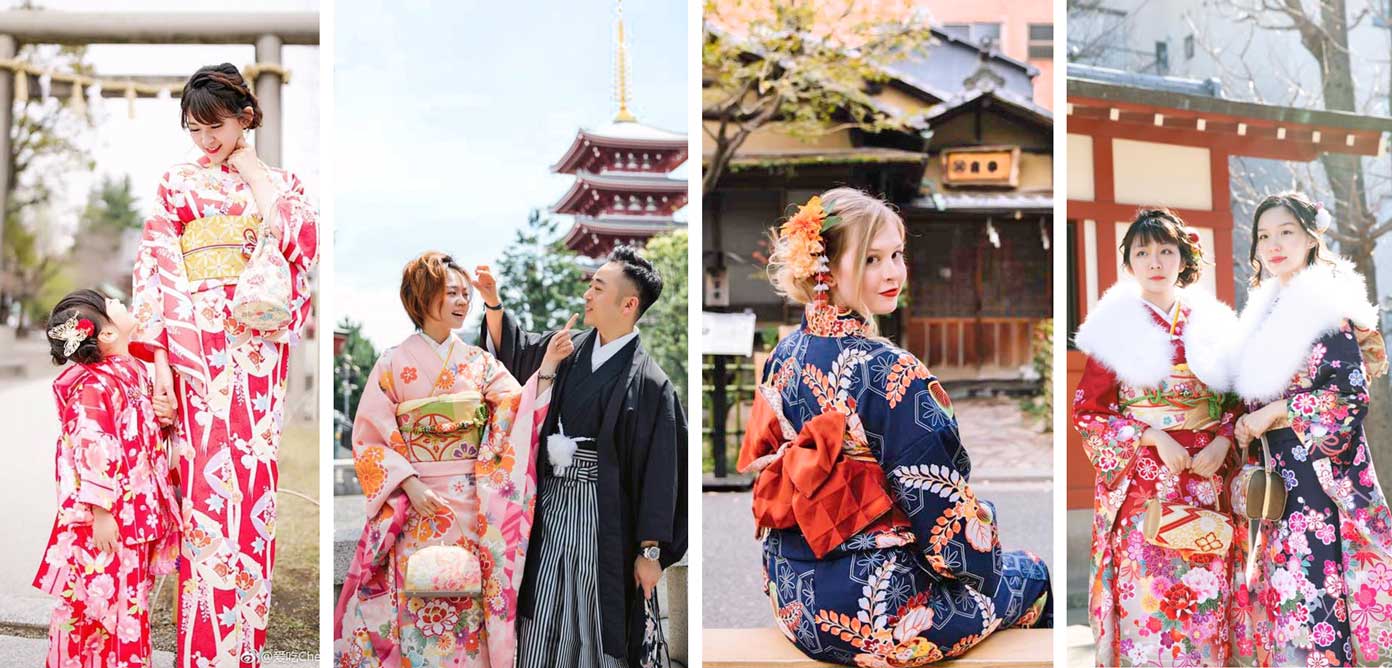
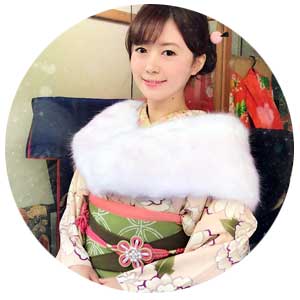
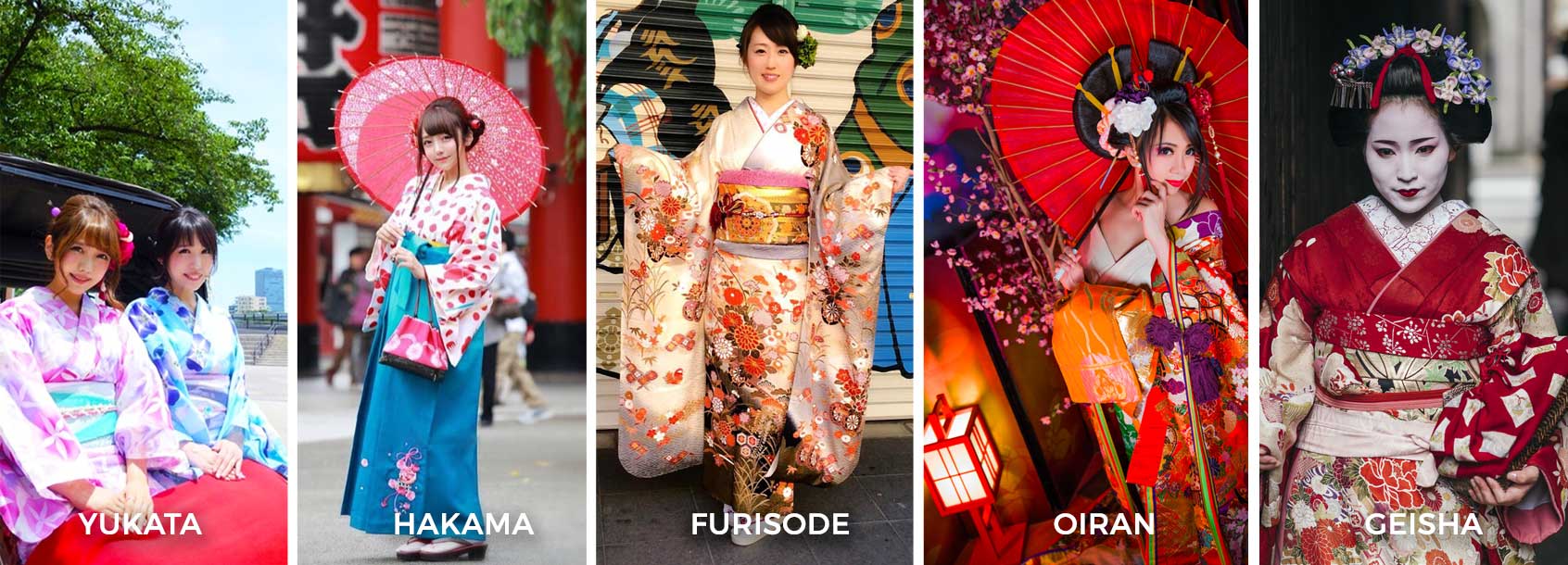
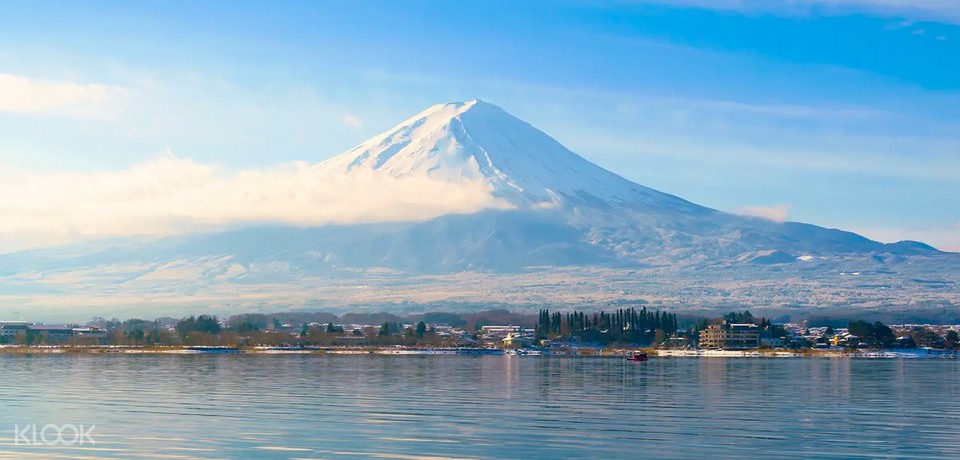
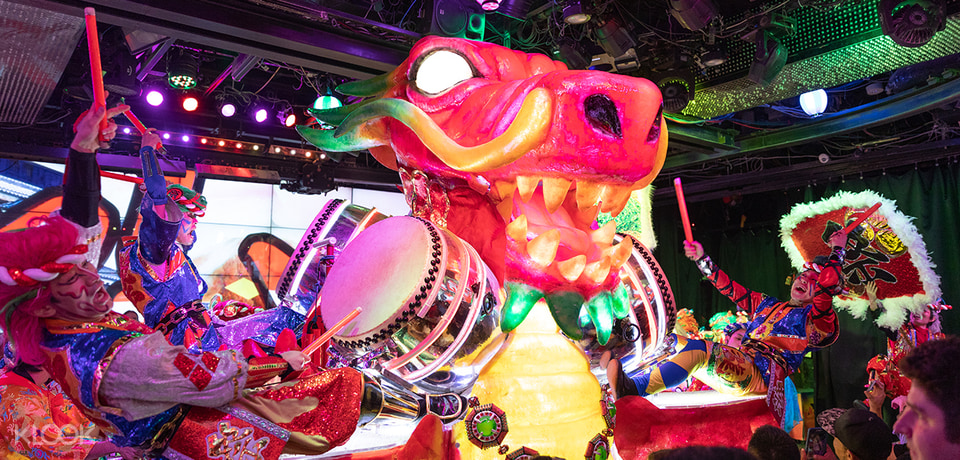
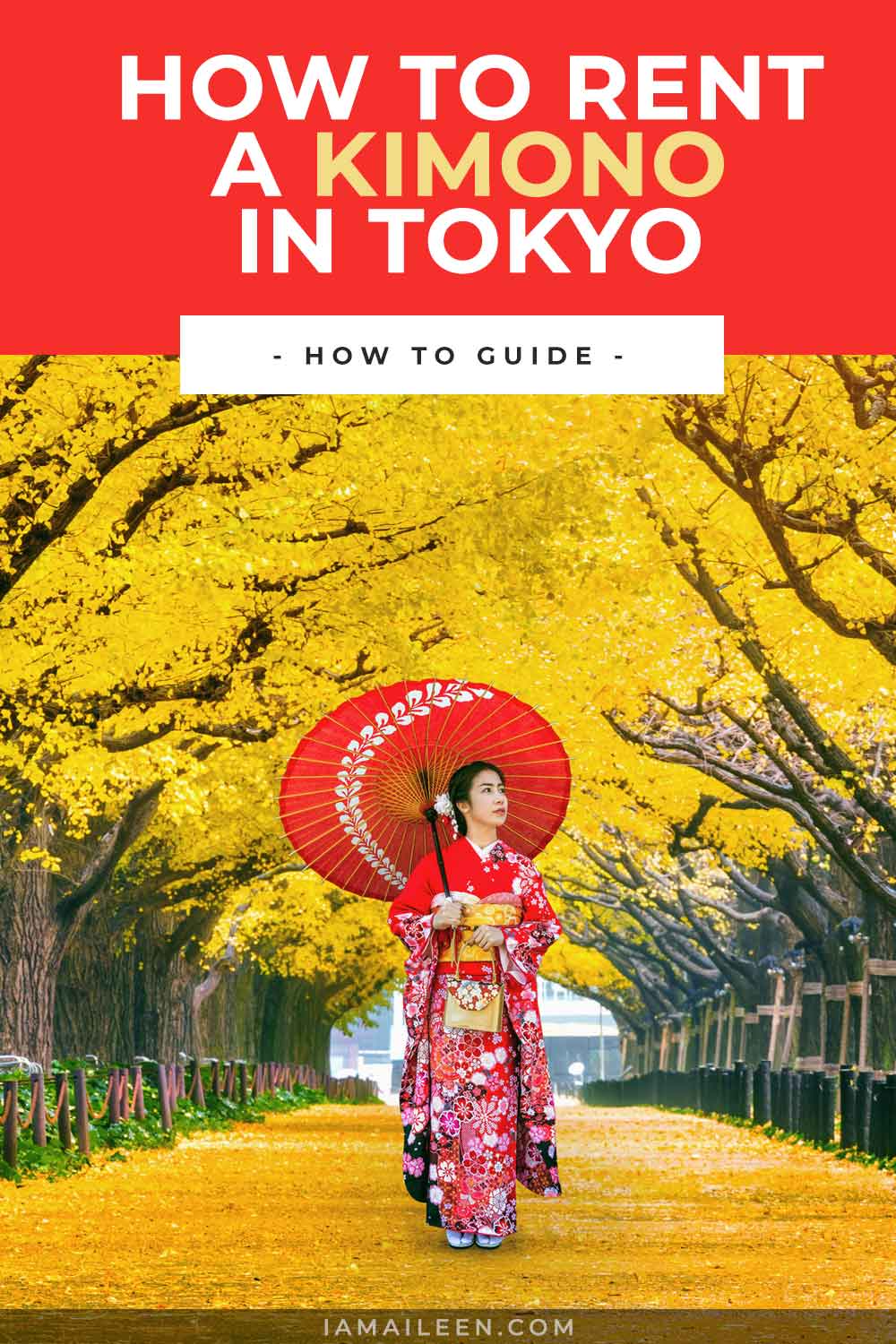


Wow. I never knew that there’s a kimono rental. Surely, I’ll try this one on my next visit. Thank you for this blog.
Awesome! I hope this helps you :D